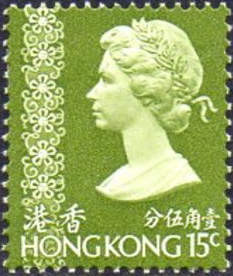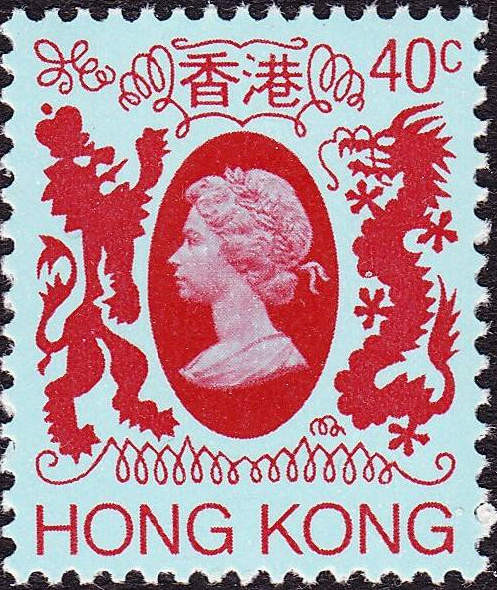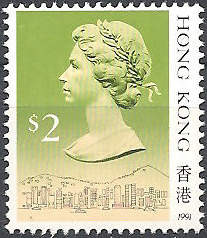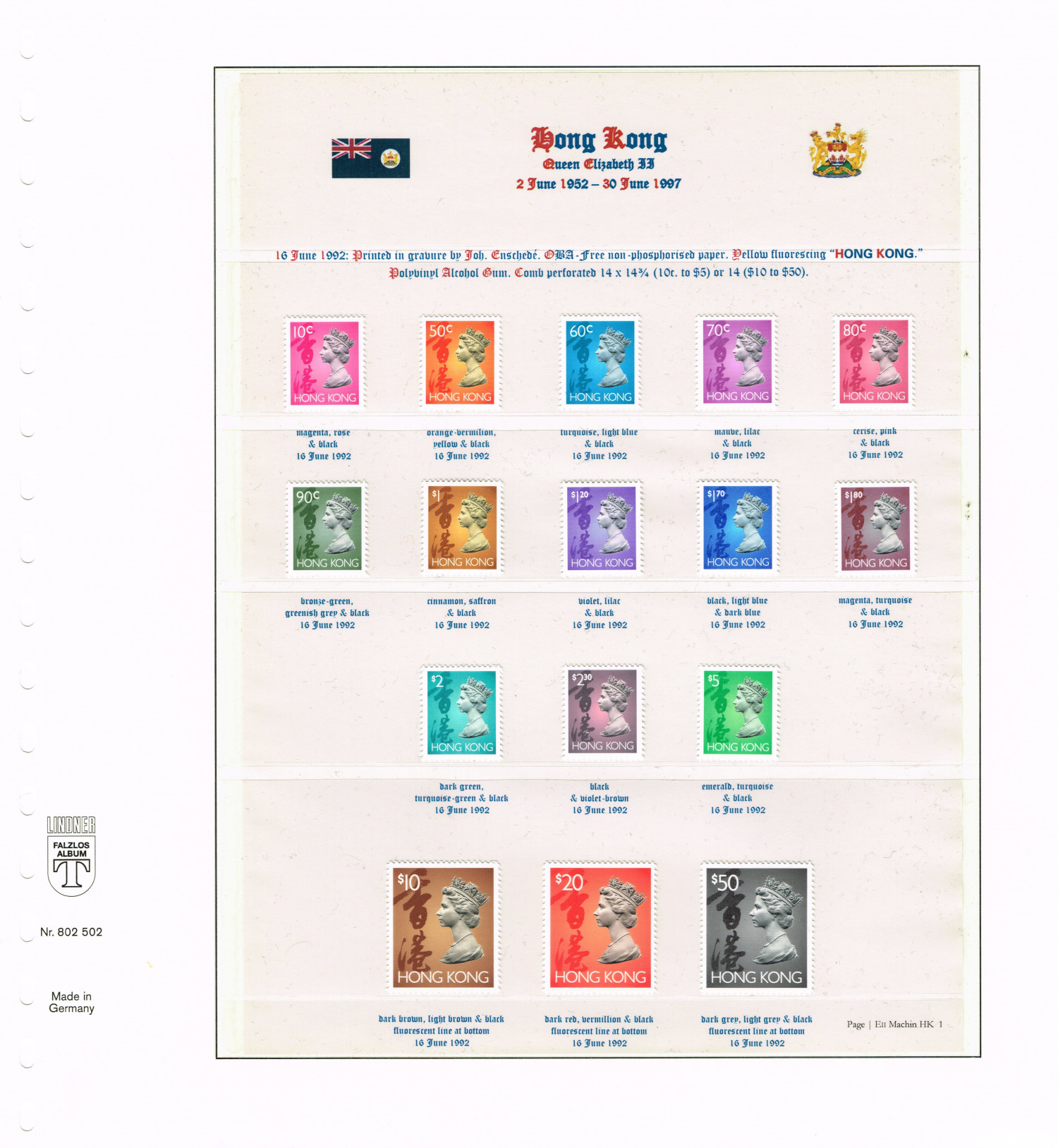| Author |
 Replies: 68 / Views: 7,380 Replies: 68 / Views: 7,380 |
|
Pillar Of The Community
Netherlands
5356 Posts |
|
|
You may be aware of the thread about the definitive stamp based on a plaster cast of H.M. Queen Elizabeth II by Arnold Machin (pronounced may-chin) O.B.E., R.A. that have been in use in the United Kingdom since 5 June 1967. http://goscf.com/t/10785&whichpage=1Douglas Myall compiled the most comprehensive listing of these Machin stamps: The Complete Deegam Machin Handbook. Deegam stands for Douglas George Albert Myall. The handbook also lists stamps with the same portrait of H.M. the Queen issued by other countries. Among these are the stamps issued in Hong Kong between 1992 and 1997. In 2014, The Bookmark Journal of the Modern British Philatelic Circle, volume 43, numbers 4-6, and volume 44, numbers 1-2 carried a series of articles on the Hong Kong Machins of 1992-1997 by Daniel Tangri. Members can download the journals from the circle's website. Before showing these stamps, I shall first comment on the "Machin Head" as used on Hong Kong definitive stamps. Hong Kong issued four decimal sets that show H.M. the Queen's effigy in a design by Arnold Machin. The first decimal set showed a portrait of H.M. the Queen wearing a wreath like the one in Mary Gillick's coinage head. The stamp design was by Arnold Machin himself and first issued in 1973.  1973, Hong Kong Machin (not my image) 1973, Hong Kong Machin (not my image)In 1982 a series showing the effigy of H.M. Queen Elizabeth flanked by the lion and dragon that, normally, bear the coat-of-arms of the Crown Colony superseded the Machin design. The portrait of H.M. the Queen appears to be the same wreathed head designed by Arnold Machin.  1982, Hong Kong definitive (not my image) 1982, Hong Kong definitive (not my image)In 1987 a further series designed by Robert W. Hookham was issued. This too showed the wreathed Machin head. This time, it appears over views of Hong Kong. The low values show Hong Kong harbour, the high values show different sights.  1987, Hong Kong Hookham (not my image) 1987, Hong Kong Hookham (not my image)This brings us to the fourth set issued in 1992. The stamp designed by Ivan Leung shows the Machin portrait used on British stamps. In it, the Queen wears the diadem she also wore on the Wilding stamps and that Queen Victoria wore on the Penny Black. Contrary to the original Hong Kong Machin head, the British Machin head shows H.M. the Queen wearing a pearl necklace. To the left of the Portrait, reading from top to bottom, appear the words "Hong Kong" in Chinese calligraphic characters. Below the Machin Head, again, appears the name of the colony reversed out of the design in Roman characters.  1992, Hong Kong definitive with "British Machin Head" designed by Ivan Leung 1992, Hong Kong definitive with "British Machin Head" designed by Ivan Leung |
|
Send note to Staff
|
|
|
|
|
Valued Member
United States
218 Posts |
|
|
Never realized the 1992 set had Hong Kong in Chinese to the left, interesting!, Thanks ... |
Send note to Staff 
|
|
|
Pillar Of The Community
Netherlands
5356 Posts |
|
|
On 16 June 1992, a set of 16 stamps was released. Johan Enschedé of Haarlem, the Netherlands, printed these stamps in gravure. They used OBA-free (optical brightening agent) non-phosphorised paper with a whitish polyvinyl-alcohol gum. Stamps with a face value up to $5 measure 21 x 24 mm. and have a 15 x 14 perforation gauge; the horizontal gauge being closer to 14¾ than 15. These stamps were printed in a vertical direction: both upright and inverted prints exist for many stamps. Stamps with a face value of $10 and higher measure 28½ x 38½ mm and have perforation gauge 14. These were printed sideways.  1992, Hong Kong definitives 1992, Hong Kong definitives |
Send note to Staff 
|
|
|
Pillar Of The Community
Netherlands
5356 Posts |
|
|
As a security measure against forgery, the words "HONG KONG" were printed in fluorescent ink. The letters fluoresce yellow, when held under short-wave or long-wave uv-light as shown in the image below.  Fluorescence under a Leuchtturm (lighthouse) long-wave uv-lamp. Fluorescence under a Leuchtturm (lighthouse) long-wave uv-lamp.The stamps with a face value of $10 or higher also have a fluorescent line in the unprinted surface over the bottom perforations. This line fluoresces green under uv-light and is best visible under short-wave uv-light. These stamps also have round perforations in all four corners.  Fluorescence under a Leuchtturm short-wave uv-lamp. Fluorescence under a Leuchtturm short-wave uv-lamp.Also note the lack of fluorescence of the OBA-free coating. |
Send note to Staff 
|
|
|
Pillar Of The Community
Netherlands
5356 Posts |
|
|
The Hong Kong Post Office increased its tariffs on 1 November 1993. A further increase in its tariffs ensued on 1 June 1995. On both occasions, four new values were issued in the small format. Joh. Enschedé continued to print the stamp sheets.  1993 & 1995, Hong Kong tariff increase definitives 1993 & 1995, Hong Kong tariff increase definitives |
Send note to Staff 
|
|
|
Pillar Of The Community
United Kingdom
892 Posts |
|
|
I don't think the early ones ought to be called Machins or Machin Heads. For me, the term 'Machin' belongs specifically a stamp with the effigy as per the GB definitives, although I know Arnold Machin designed the other effigy too. |
Send note to Staff 
|
|
|
Pillar Of The Community
Netherlands
5356 Posts |
|
|
A valid opinion. I noticed a thread with the question which are the Hong Kong Machins? I started from the Deegam perspective and found the answer obvious: mine are. As a collector of GB Machins and user of Douglas Myall's Handbook, I am keeping to "Machins" as being the 1992 ones. I do not collect Hong Kong, but found these a nice addition to my GB collection.
But than I found out there is more to it than blindly following Douglas Myall. I wonder if Ivan Leung is thinking "the 1992 ones are not Machins, they are Leungs." I am surprised how little information you can find on the web about these stamps. I do not have a catalogue of Hong Kong stamps. Maybe Yang has the answer. However, I still haven't the foggiest who designed the 1982 issue.
The 1973 ones are the only design by Arnold Machin using a portrait by his hand.
Hopefully, I shall be showing how much more there is to these stamps than just another set of modern definitive stamps with a short life span. |
Send note to Staff 
|
| Edited by NSK - 09/13/2021 09:51 am |
|
|
Pillar Of The Community
Australia
1863 Posts |
|
|
Pillar Of The Community
Netherlands
5356 Posts |
|
|
@22crows, Thanks. Another question answered and also confirmation that he used Machin's "Wreathed Head." |
Send note to Staff 
|
|
|
Pillar Of The Community
Australia
1863 Posts |
|
|
Pillar Of The Community
Netherlands
5356 Posts |
|
|
In April 1996, the Hong Kong Post Office automated the sorting of mail. It installed two machines for facing and cancelling mail. One was installed at the General Post Office and the other at the International Mail Centre. The automatic letter-facing and cancelling machines faced mail items for correct machine cancellation and sorted air mail from mail addressed to Hong Kong and China addresses. The machines used the light signal emitted by phosphor bars after irradiation with uv light. To enable automatic sorting and facing of mail, the Hong Kong Post Office re-issued the current definitive series with phosphor bars applied over the ink. Stamps pre-payings airmail rates, i.e., those with a face value of $2.10 and higher had one central phosphor bar applied. Other stamps had two side phosphor bars applied. No phosphor bars were applied to the large-format high values of $10, $20, and $50. The Hong Kong Post Office issued the new stamps with phosphor bars on 24 April 1996. On 2 September 1996, the Hong Kong Post Office raised its tariffs. On that date, it issued four new stamps. The airmail rate for zone 1 increased from $2.10 to $2.50. Consequently, the $2.10 stamp no longer pre-paid a rate for international air mail. On 13 september 1996, the $2.10 stamp was re-issued with two side phosphor bars.  1996, Hong Kong definitives with phosphor bars 1996, Hong Kong definitives with phosphor bars |
Send note to Staff 
|
| Edited by NSK - 09/13/2021 11:17 am |
|
|
Pillar Of The Community
Netherlands
5356 Posts |
|
|
The automatic letter-facing and cancellation machines used phosphorescence to face mail items, and sort international air mail from local mail. After irradiation by uv light, phosphor emits a light signal that scanners in the sorting machine read. The light signal will tell the machine where the stamp is. This allows the machine to turn the mail item, so the stamp appears in two of four quadrants. Since the mail passes at a known speed, the scanner can also read the distance between two light signals. This distance is fixed for stamps that have two phosphor bars. The remainder of mail items must have one phosphor bar or no phosphor bar and can be sorted out. The high values that had no phosphor bars, primarily, paid for carriage of larger and heavier items.  1996, Hong Kong definitives with phosphor bars 1996, Hong Kong definitives with phosphor bars |
Send note to Staff 
|
|
|
Pillar Of The Community
736 Posts |
|
|
Very nice display pages. Always thought this an attractive series.
Do you also have the several miniature sheets with this design that came after?
pat |
Send note to Staff 
|
|
|
Pillar Of The Community
United Kingdom
892 Posts |
|
|
The effigy on the earlier ones (1973 etc) was prepared by Arnold Machin for use as a miniature on GB commemoratives. Initially the Post Office intended to reduce the definitive Machin head for use on commemoratives too, but they found it looked odd and spiky in reduced size, so they asked Machin to design another without the diadem.
This he did in the same way - made a plaster cast, essentially the original Machin head, but with amendments, and that become the device used on GB commems (sometimes in sillhouette). Hong Kong did a good job of sizing it up again :) |
Send note to Staff 
|
| Edited by Ringo - 09/13/2021 2:56 pm |
|
|
Pillar Of The Community
Netherlands
5356 Posts |
|
|
@pat,
Yes. I shall post them later. I also have pages with coil and booklet stamps. |
Send note to Staff 
|
|
|
Pillar Of The Community
Netherlands
5356 Posts |
|
 Replies: 68 / Views: 7,380 Replies: 68 / Views: 7,380 |
|
